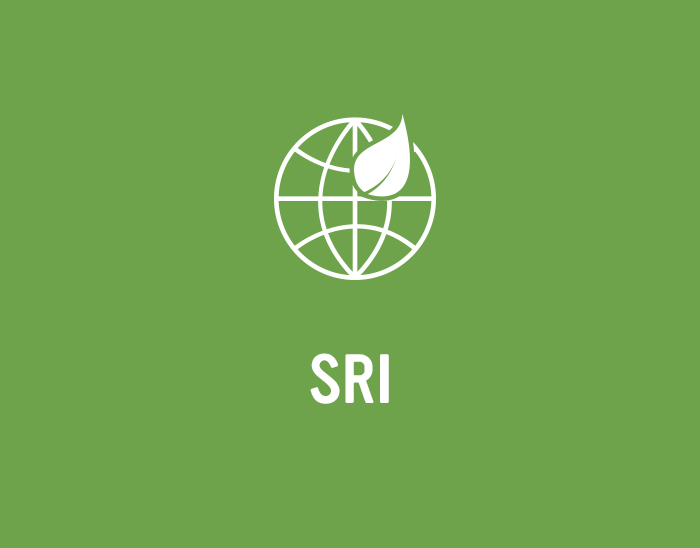
“Climate first but not climate only” as ISSB launches brace of new standards
The International Sustainability Standards Board published its long-awaited first two global sustainability disclosure standards at the end of June, with the goal of building a rigorous and comparable reporting framework that facilitates sustainable finance. On the day IFRS S1 and IFRS S2 launched, KangaNews caught up with Jingdong Hua, vice chair of the International Sustainability Standards Board, in Singapore to discuss the new standards and how they might be incorporated by national regulators.
What is the primary driver for developing global standards for sustainability reporting and how did you come to be involved?
The ISSB [International Sustainability Standards Board] was created at COP26 with strong support from the G20, G7, FSB [Financial Stability Board] and IOSCO [International Organization of Securities Commissions], which sits on the IFRS Foundation’s governing board.
In the last few years, companies that have to undertake sustainability reporting have found that this has started to become burdensome: depending on the jurisdiction and asset classes, companies now have several hundred different reporting requirements. This also adds confusion for investors when they try to assess the true picture of a company’s sustainability risks and opportunities. It was not clear that [investors] were comparing apples and apples due to the multitude of different standards.
There has always been recognition that eventually there should be convergence. In 2020, the trustees of the IFRS Foundation published a consultation to ask the market whether we have a role to play in creating a global baseline set of sustainability standards – in the same way that 20 years ago the foundation asked the same question about the convergence of accounting standards.
The response was an overwhelming ‘yes’ – we need a global sustainability standard with a public interest outcome of enhancing transparency, accountability, trust, efficiency and comparability.
Simultaneously, there is global urgency on climate change. Whether it is TCFD [Task Force on Climate-Related Financial Disclosures] or SASB [Sustainability Accounting Standards Board] or others, quite a number of voluntary standards have been developed. I think the time was right.
The last 18 months have been non-stop with creating the draft, seeking public comments and then recruiting 14 independent board members, including myself, to work on revising the draft during the past nine months. I come from the fixed income world. In my roles at IFC [International Finance Corporation] and World Bank I led a lot of the initiatives to launch green, social and sustainability (GSS) bonds.
This led to the issuance [on 26 June] of our first two standards. It has been a very intense journey. But I can tell you as one of the 14 board members that I have been really impressed with the rigour, due process, care and very intense debates that have gone on. I am very happy we have got to this point.
The standards have been launched with a narrative of creating a common language. Why is language an appropriate analogy?
I believe this is a great set of high-quality global baseline standards that will start to converge everybody to begin speaking a new language. Of course, as with any language, we don't speak perfectly on day one. It will take some time. But the message is very clear: make a start.
Hopefully, in short order investors, preparers, assurers and intermediaries in the financial market will all speak the same language. This in turn will make global financial market flow even better.
Looking at IFRS S1 and IFRS S2 in more detail, the language analogy is useful for describing the first standard, which covers general requirements for disclosure of sustainability-related financial information. IFRS S1 is the grammar, the lexicon, the vocabulary and the philosophy of this language. It defines how it is spoken. IFRS S2 can be considered as manifestation of the lexicon as it relates to climate.
Think of IFRS S1 as a general theme – it describes the ways companies need to disclose all material sustainability-related information. It requires companies to think about sustainability matters holistically.
Regarding IFRS S2, why was climate chosen as the first area in which to create global baseline disclosure rules?
We call this ‘climate first’ due to the global urgency on climate. But it is not climate only, and this is why IFRS S1 is important. If a company is already disclosing on biodiversity or the gender composition of its board, we encourage it to continue to do so.
Are there templates for disclosing under the new standards?
IFRS S1 says all material sustainability-related information needs to be disclosed and we have aligned with the structure set out in TCFD to help companies approach this. As such, we have incorporated TCFD as the core content areas, and the standard shows how a company should disclose to these to reflect how it manages these risks and opportunities.
The starting point is governance, then moving on to strategy, risk management, and metrics and targets. For each material core content area there is an organised way of reporting.
In IFRS S2, when it comes to climate, we have much more granular detail on how companies should report physical and transition risks, how they should conduct scenario analysis to arrive at a resilience assessment, and how they should describe their risks and opportunities as a business.
Also, if a company’s jurisdiction has already committed to a global compact, like the Paris Agreement or a net zero target, companies are required to disclose how this has informed their own net zero transition plan. We have also pointed to guidance materials to help companies approach this.
As the sustainable finance market has evolved it seems investors are becoming more interested in the holistic sustainability view of a company rather than the projects being financed with labelled bonds. It sounds like the ISSB Standards support this concept.
I came from the green bond market, and at IFC and World Bank we did impact reports on green and sustainable bonds. From a use-of-proceeds, asset class approach to a whole-of-balance-sheet approach is a natural evolution.
This said, investors look at different things. For an investment-grade fixed income investor, as a senior creditor the focus is different from that of a private equity investor – which, as a long-term investor, likely wants a much more comprehensive assessment of sustainability risks.
My sense now I'm in the standard-making environment is that if one company is fully compliant with the ISSB Standards, the additional effort in producing a green-bond report aligned with standards such as the ICMA [International Capital Market Association] Principles becomes much easier. This is because the whole of balance sheet and income statement disclosure is already done under the ISSB Standards.
The company can either refer to what it has already done in its annual report or take out the portions that bond investors care about. In this way, the ISSB Standards will definitely help companies issuing labelled bonds to comply with the ICMA Principles.
“I think whether it's voluntary or mandatory adoption of our standards, once the convergence is there, once the same language is spoken, it definitely will reduce, minimise or even eliminate greenwashing.”
On the subject of transition, does it matter how the financing is structured, as long as transition is encouraged? In the discussions on climate for IFRS S2 did the ISSB look into companies’ transition trajectory?
This is a great question and I’d like to pick it apart a little because I think it’s important. Remember that my view is as one of the 14 independent board members – it should not be seen as the ISSB view. But I think I can reflect the collective view on this issue.
As a standard maker, we are agnostic on how a company conducts its business on sustainability. We just want a transparent, standardised way of reporting. Eventually, it is investors that will decide which way they want to go.
From this point of view, our standard is a descriptive standard not a prescriptive one – saying, for example, that companies have to achieve net zero or other targets. This is not within our purview.
This said, international commitments on climate translated into national commitments affect a company's transition plan. These commitments drive a company's recognition of transition risks and opportunities. For example, if a company has a fleet of gasoline powered cars, it drives the decision on whether to replace them sooner or later.
We do have requirements for a company to disclose how it plans to achieve any climate-related targets it is required to meet by law or regulation, whether it has used a climate-related scenario aligned with the latest international agreement on climate change – such as the Paris Agreement – and how the agreement, including jurisdictional commitments that have arisen from this, has informed the target.
Our standards complement the ICMA Principles very well – they also require information about corporate sustainability policies. This is the space in which we are providing enhanced transparency and reporting that can support and underpin product-oriented disclosures.
Was there any formal dialogue with ICMA and the Principles when developing the ISSB Standards?
ICMA deserves a lot of credit for developing the Principles. My personal interpretation is that labelled bonds like green, gender, social and sustainability, as well as sustainability-linked bonds, have a positive social outcome angle. This is the distinction I want to make from the ISSB Standards: we want companies to describe what they do and then investors decide.
In the sustainable bond space, companies already know that investors want positive impact. This is a subtle difference. It's not that we would not like to see a positive outcome. But our approach is to give investors the full sustainability information for them to make a decision.
Let me give you a hypothetical example. Let's say in the future we have a sustainability disclosure standard about gender composition on boards that companies need to disclose because investors have given us feedback that this is important information.
The standard will say that a company has to report on the gender composition, but it won’t state things like the percentage of women the board must have. Once this information is revealed via disclosure, investors will compare different companies’ gender composition and decide whether the composition is beneficial for their investment preference.
‘Greenhushing’ has become much more prevalent as companies become more wary of being subject to claims of greenwashing. Can standards like the ISSB improve the greenhushing story, even if it is just by mandating reporting?
I think whether it's voluntary or mandatory adoption of our standards, once the convergence is there, once the same language is spoken, it definitely will reduce, minimise or even eliminate greenwashing.
Greenwashing comes from a lack of trust and a lack of comparability because we are comparing apples and oranges. Once this is eliminated, naturally this problem should go away.
Except in the case of outright fraud?
Let me put it this way. If there is a fraud there is a deliberate attempt to hide the truth and it may also mean that the auditing and assurance processes have not been done properly.
Although the IFRS Foundation has no mandate to develop assurance standards or to determine the level of assurance required by those applying IFRS S1 and IFRS S2, the ISSB appreciates the importance of assurance in providing high-quality information to investors to inform their decision-making.
The IAASB [International Assurance Standards Board] is working on the assurance of our sustainability disclosure standards. This is an integral part of disclosure – just like an audit of a financial report. We hope the first draft of the international assurance standard will come out by year-end and that the IAASB will finalise the standard before the first reporting period in September 2024.
“We will come up with what we call adoption guidance. Depending on various stages of readiness and adoption processes, we will provide a set of high-level guidance and work with jurisdictions to travel the journey for eventual mandatory adoption.”
Would it be correct to say the ISSB is comparable to the Basel Committee in that the idea is to produce a set of global principles that then have local interpretation?
Yes and no. Yes, in the sense that Basel rules can be mandatory for banks as part of national regulatory frameworks, a prudential set of requirements. As I understand it, the primary purpose of the Basel requirements is prudential risk. They are risk-oriented to ensure financial system stability. Whereas our standards, in addition to hopefully ensuring mandatory disclosure, have a broader level of purposes.
Disclosure should never be a box-checking exercise. This is to enable investors to make informed decisions. Investors not only want to review sustainability-related risks, they also want to see sustainability-related opportunities and financial impact.
In paragraph two of IFRS S1 we have described a compelling relationship between a company and its stakeholders, society, and economy as a neutral environment that affects its value, or cashflow, throughout its value chain. This is why investors care about looking at this information.
I have experience as an investor when I was head of the World Bank Group Pension Fund. I can see how investors can discern a company's ability to generate alpha once ISSB reporting has been undertaken. The ISSB Standards are broader than the Basel Committee, because the Basel rules are not about what profit an investor makes. They are to reassure national banking regulators that banks are acting with propriety.
What is the expected process for interaction with individual jurisdictional interpretations of the ISSB Standards? For example, New Zealand has already implemented mandatory climate-related financial disclosure and Australia is on the path to the same. How will the market know national disclosure regimes are ISSB-aligned? Will the ISSB verify this?
First of all, all security regulators have a relationship with ISSB through IOSCO. Hopefully, our standards will receive endorsement from IOSCO. This will be the first indication that our standards are ready for mandatory adoption by jurisdictions.
Obviously, it is up to each jurisdiction to work on how it can adopt the ISSB Standards, depending on its regulatory and legislative processes. Different countries have different approaches. Some are creating a national corresponding standard maker.
For example, Canada, Japan and Korea have created national sustainability standard boards. This is their way of transporting our standard into a domestic regulatory landscape. Other jurisdictions already have the IFRS Foundation in their body of regulatory approval so introducing the ISSB Standards will be more straightforward.
We are working on this with jurisdictions. We will come up with what we call adoption guidance. Depending on various stages of readiness and adoption processes, we will provide a set of high-level guidance and work with jurisdictions to travel the journey for eventual mandatory adoption.
Meanwhile, we certainly encourage big companies in every jurisdiction that have been reporting on different voluntary standards to continue with voluntary reporting. These big companies should be ready sooner than many smaller companies.
In the case of a country like New Zealand, which has already implemented a mandatory climate-related risk reporting regime, I can say that in the process of creating the new ISSB Standards we have already merged several legacy standards into ours. This includes SASB, the Integrated Reporting Framework and the Climate Disclosure Standards Board. TCFD is the guiding principle on how full disclosure should go.
New Zealand companies actually have a leg up. If a company is already reporting under TCFD, the overall architecture is already there.
So the aim is for the ISSB Standards to be mandatory?
Yes, eventually. Just like the accounting standards. Once it is mandatory, with mandatory assurance, this is the highest level of public accountability.
Would you say the motivating factor for mandatory adoption by individual jurisdictions is international capital? In other words, if companies want to be open to business on a global scale, investors will demand they align with the ISSB Standards.
The short answer is yes. As a public interest organisation, the objective of the IFRS Foundation is to serve the interest of investors or providers of finance. A jurisdiction needs to decide the public policy benefit of making its capital market part of the global landscape that speaks the same language. It could have a Kiwi accent, but it will be well understood.
In other words, as global baseline standards IFRS S1 and IFRS S2 should remain intact while jurisdictions could add additional requirements. We refer to this as a building blocks approach, hence the possibility of different accents.

WOMEN IN CAPITAL MARKETS Yearbook 2023
KangaNews's annual yearbook amplifying female voices in the Australian capital market.














